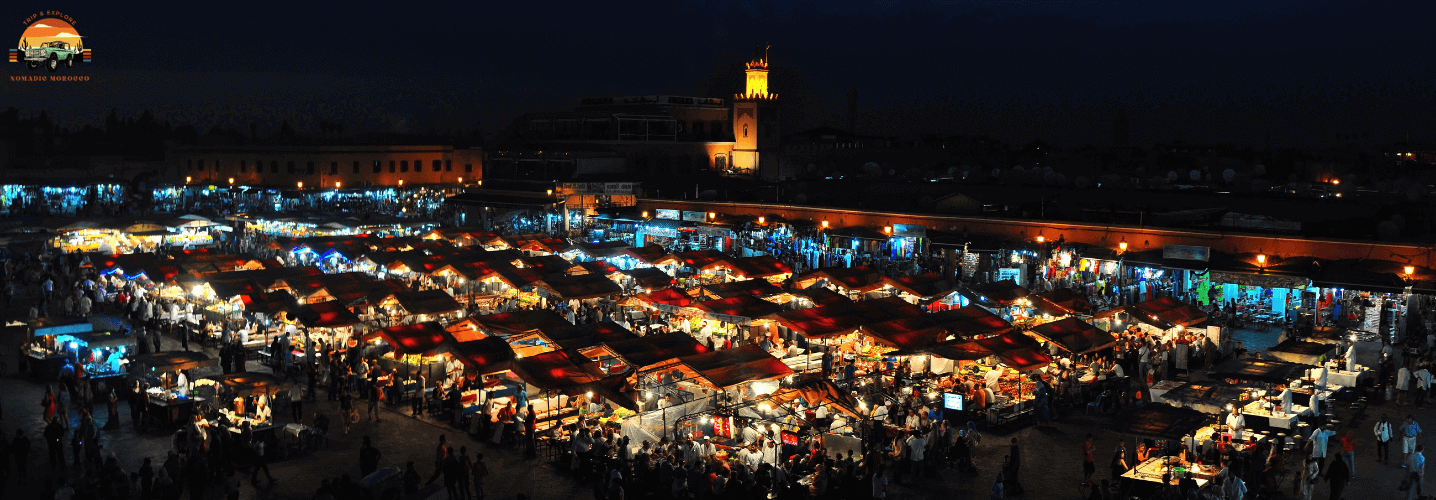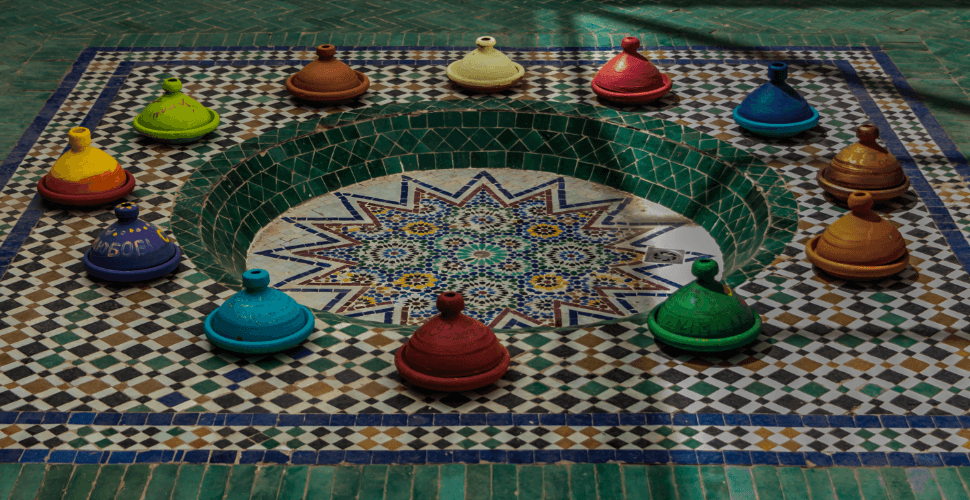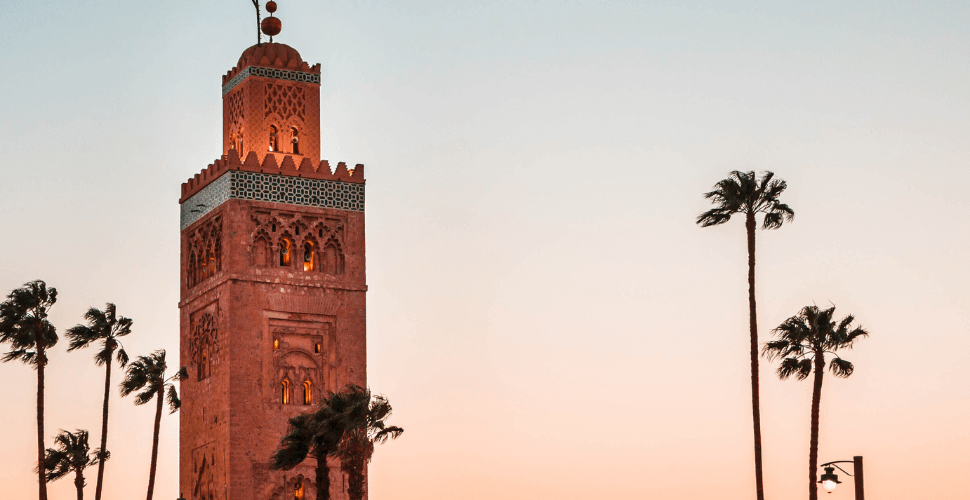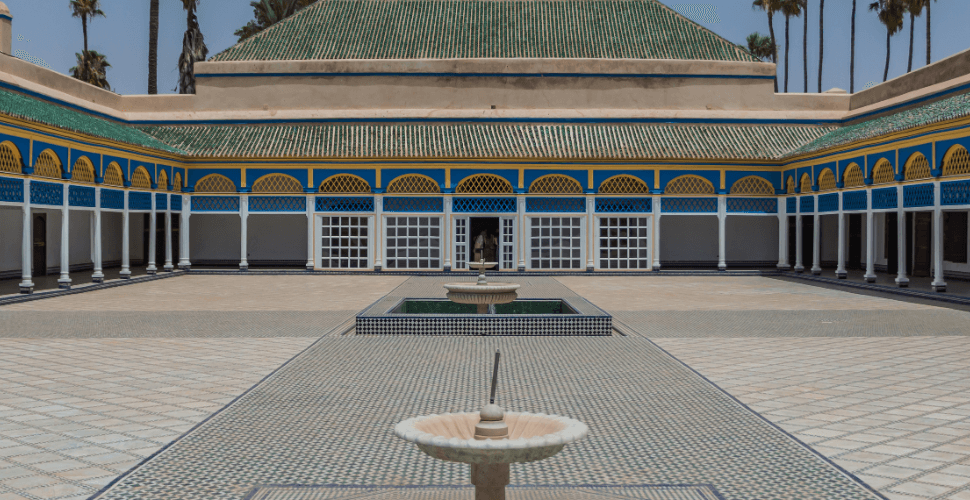Jemaa El Fna, located in the heart of Marrakech’s medina, has a rich history dating back to the 11th century. Originally used as a gathering place for local farmers and traders to sell their goods, it gradually evolved into a hub of cultural exchange and entertainment.
During the reign of the Almohad dynasty in the 12th century, Jemaa El Fna became an important center for religious education and spiritual practices. It was also during this time that storytellers began to gather at the square, captivating audiences with their tales of adventure and morality.
In later centuries, Jemaa El Fna continued to attract artists, musicians, and performers from all over Morocco. Today it remains one of the country’s most iconic landmarks and a testament to its vibrant culture and traditions.

A Walk Through Jemaa El Fna: Exploring the Sights, Sounds, and Smells of the Square

As you enter Jemaa El Fna, the first thing that will catch your attention is the vibrant atmosphere. The square is always bustling with people, from locals selling their wares to tourists exploring the sights and sounds. You’ll hear music playing in the background as performers entertain crowds with traditional Moroccan dances.
The smells of spices and food waft through the air, tempting you to try some of the delicious street food available at every corner. From savory tagines to sweet pastries, there’s something for everyone’s taste buds. Don’t be afraid to haggle with vendors over prices – it’s a common practice in Morocco.
As you walk further into Jemaa El Fna, take note of all the unique sights around you. Snake charmers coaxing cobras out of baskets, monkeys performing tricks on leashes – it can feel overwhelming at times but taking everything in at once is part of what makes this place so special. Keep your eyes peeled for hidden gems like local artisans selling handmade crafts or musicians playing instruments that are native to Morocco.
The Food Scene at Jemaa El Fna: From Street Vendors to Fine Dining
The food scene at Jemaa El Fna is a must-try experience for any visitor to Marrakech. From street vendors selling traditional Moroccan dishes like tagine and couscous, to fine dining restaurants with modern twists on classic cuisine, there is something for everyone’s taste buds.
For those looking for an authentic street food experience, the stalls in the square offer a variety of options. One popular dish is the merguez sausage sandwich, made with spicy lamb sausage and served on fresh bread. Another crowd favorite is snail soup, which may sound unusual but has been a staple of Moroccan cuisine for centuries.
If you’re in the mood for a more upscale dining experience, there are plenty of restaurants surrounding the square that offer high-quality Moroccan cuisine with elegant presentations. Many of these establishments feature rooftop terraces with stunning views of Jemaa El Fna and its bustling atmosphere below.
Whether you choose to dine at one of the many street vendors or opt for a fancy restaurant overlooking Jemaa El Fna, one thing is certain: your taste buds will be delighted by all that this vibrant square has to offer.

Shopping at Jemaa El Fna: Finding Unique Souvenirs and Bargains

Jemaa El Fna is a shopper’s paradise, with an abundance of unique souvenirs and bargains waiting to be discovered. From traditional Moroccan textiles and ceramics to intricate metalwork and leather goods, there is something for everyone in the bustling marketplace.
One popular item to look out for is argan oil, a prized beauty product made from the nuts of the argan tree that grows only in Morocco. You can find it sold by vendors throughout Jemaa El Fna, but make sure to purchase from reputable sellers who offer pure, organic oil.
For those interested in fashion, haggling over prices for handmade leather bags or shoes is a must-do experience. Many shops also sell beautiful kaftans and djellabas – loose-fitting garments worn by both men and women that are perfect for staying cool in Marrakech’s hot climate. Just remember to negotiate on price before making any purchases!
The Entertainment at Jemaa El Fna: Storytelling, Music, and Dance Performances
The entertainment at Jemaa El Fna is a must-see for any visitor to Marrakech. The square comes alive with the sounds of traditional Moroccan music and dance performances, as well as mesmerizing storytelling sessions that captivate audiences. Visitors can expect to see local musicians playing instruments such as the oud, guembri, and qraqeb while dancers perform in colorful costumes.
One popular form of entertainment at Jemaa El Fna is Gnawa music. This style originated from West Africa and features hypnotic rhythms played on traditional instruments. It’s not uncommon to see locals dancing in circles around the musicians during these performances. Another unique performance visitors may witness is fire-eating shows where performers swallow flames or breathe fire into the air.
Storytelling has been an integral part of Moroccan culture for centuries, and it’s no different at Jemaa El Fna. Storytellers gather crowds with their animated gestures and vivid descriptions of fables, myths, and legends passed down through generations. They often use props like puppets or musical instruments to add depth to their stories, making them even more captivating for listeners young and old alike.
Overall, experiencing the entertainment at Jemaa El Fna is an unforgettable experience that showcases Morocco’s rich cultural heritage through its music, dance performances,and storytelling traditions.

The People of Jemaa El Fna: Meeting the Locals and Experiencing Moroccan Hospitality
As you navigate through the bustling crowds of Jemaa El Fna, take a moment to connect with the locals and experience their warm hospitality. Moroccans are known for their welcoming nature and genuine interest in getting to know visitors. Strike up a conversation with a vendor selling spices or textiles, or sit down at one of the many cafes lining the square for some mint tea and people-watching.
One way to truly immerse yourself in Moroccan culture is by participating in traditional activities alongside locals. You may be invited to join in on a game of chess or backgammon, watch as henna artists adorn hands with intricate designs, or even try your hand at playing traditional instruments like the guembri or darbuka drum. These experiences offer an authentic glimpse into daily life in Marrakech.
If you’re lucky enough to visit during Ramadan, you’ll have the opportunity to break fast alongside local families at sunset. The streets around Jemaa El Fna come alive with food stalls offering dates, harira soup, and other traditional dishes. It’s an unforgettable experience that allows you to not only taste delicious cuisine but also witness firsthand how important community and family are in Moroccan culture.

The Daytime Experience at Jemaa El Fna: A Calmer Atmosphere with Unique Activities

During the daytime, Jemaa El Fna takes on a more relaxed atmosphere compared to its bustling nighttime counterpart. Visitors can enjoy unique activities such as henna tattoos and snake charming performances. Henna artists can be found throughout the square, offering intricate designs for a small fee. Snake charmers display their skills with cobras and other reptiles, but it’s important to note that animal welfare concerns have been raised about this practice.
For those seeking a more educational experience, there are several museums in the surrounding area. The Marrakech Museum is housed in a former palace and showcases traditional Moroccan art and artifacts. The Photography Museum of Marrakech features contemporary photography from around Morocco and beyond.
Foodies will also find plenty to enjoy during the daytime at Jemaa El Fna. Many local restaurants offer lunch specials featuring traditional Moroccan dishes such as tagine or couscous. Street vendors sell fresh fruit juices and snacks like roasted nuts or dates. It’s worth noting that some travelers may experience stomach issues from street food, so it’s important to exercise caution when choosing what to eat.
The Nighttime Experience at Jemaa El Fna: A Vibrant Atmosphere with Festive Energy
As the sun sets over Jemaa El Fna, the square transforms into a lively and bustling hub of activity. The air is filled with the scent of grilled meats and spices as food vendors set up their stalls for hungry visitors. Musicians and dancers take to the center stage, entertaining crowds with traditional Moroccan music and performances.
The energy in Jemaa El Fna at night is infectious, drawing both locals and tourists alike to join in on the festivities. Visitors can sample a variety of street foods such as tagine, couscous or pastries while watching acrobats perform daring feats or listening to storytellers weave tales from Moroccan folklore.
For those looking for a more relaxed atmosphere amidst all the chaos, there are plenty of rooftop terraces overlooking the square where you can enjoy a drink or two while taking in all that’s happening below. As night falls over Marrakech, Jemaa El Fna comes alive with an unmistakable vibrancy that must be experienced firsthand.

Jemaa El Fna and Moroccan Culture: How the Square Reflects the Country’s Traditions and Values

The vibrant atmosphere of Jemaa El Fna is a reflection of Moroccan culture and its traditions. The square has long been a hub for social gatherings, where locals come together to share stories, music, and dance performances. These cultural activities have been passed down through generations and continue to thrive at Jemaa El Fna.
One significant aspect of Moroccan culture that is reflected in the square is hospitality. Visitors are warmly welcomed by the locals who offer tea or food as a gesture of kindness. This tradition stems from Islamic beliefs that emphasize the importance of treating guests with respect and generosity. It’s not uncommon for tourists to strike up conversations with locals over a cup of mint tea or while enjoying traditional dishes such as tagine.
Another important value that can be observed at Jemaa El Fna is community spirit. The square brings people from all walks of life together, creating an inclusive environment where everyone feels welcome. Whether it’s watching street performers or shopping at local stalls, visitors can experience firsthand how Moroccans prioritize relationships with others above all else.
Tips for Visiting Jemaa El Fna: What to Wear, How to Navigate, and How to Stay Safe.
When visiting Jemaa El Fna, it is important to dress appropriately for the culture and climate. Women should cover their shoulders and wear long skirts or pants, while men should avoid shorts and tank tops. Comfortable shoes are also a must as there is a lot of walking involved. Additionally, it is recommended to bring sunscreen and a hat to protect against the strong sun.
Navigating through Jemaa El Fna can be overwhelming at times due to the crowds and maze-like layout of the square. It is best to familiarize yourself with landmarks such as the Koutoubia Mosque or one of the many food stalls in order to orient yourself. Hiring a local guide can also be helpful in navigating through the area.
While Jemaa El Fna is generally safe during daytime hours, it is important to exercise caution at night when pickpocketing incidents may occur. It’s best not to carry large amounts of cash or valuables on your person and keep an eye on your belongings at all times. In case of emergency, locate one of the many police stations located within close proximity to the square.

Unleash the Adventure: Discover Our Excursions
Please note that every route listed on our website is simply a starting point. At our company, we believe in fully customizing every aspect of your trip to meet your specific timing, budget, and preferences. We offer complete flexibility to extend, adjust, shorten, add or even skip stops and towns within a reasonable frame.
Our team of experts will work with you to recommend the best routes and schedules that cater to your interests and create an efficient yet comfortable itinerary. Trust us to take care of all the details, so you can sit back, relax and enjoy your personalized travel experience.










